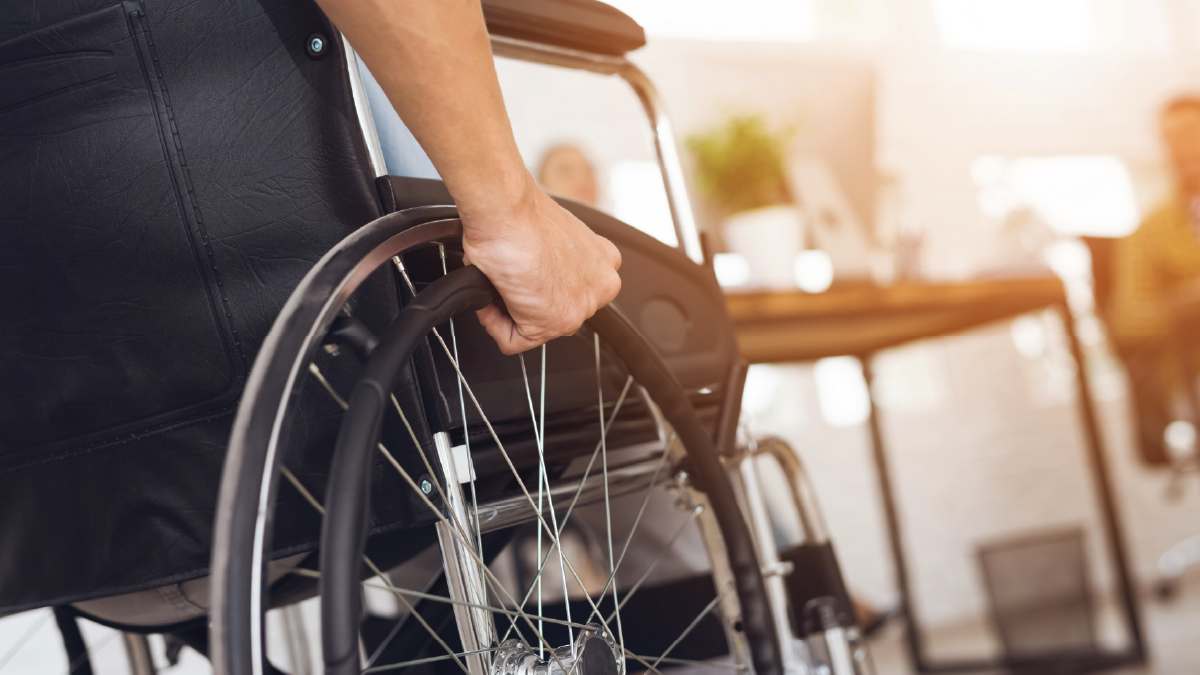May 10, 2011 was a beautiful spring day in Connecticut. I was driving home from work and stuck in traffic when a pickup truck traveling 80 miles per hour from the opposite direction suddenly veered into my lane and struck my car head-on. I watched the Coventry pastures recede into the distance as a helicopter whisked my shattered body away to St. Francis Hospital, moments before I passed out from shock. I later learned that my heart stopped twice during the journey.
A little over three weeks later, I emerged from a medically induced coma. You’ve seen those cartoons of people looking like mummies with their bandaged limbs dangling in the air? That was me, literally. To my family’s relief, I had spoken my first coherent sentence in about a month. I can’t share that with you out of courtesy.
It was a long journey of almost a year of recovery, from hospital to nursing home and finally, thankfully, home. I was in a physical therapy clinic. During that time, the best day was when I recovered enough to transfer into a wheelchair and move down the hallway wherever I wanted. Freedom! I find the phrase “wheelchair bound” offensive. I was wheelchair-free.
I quickly learned that the world was not designed for wheelchair users. Countless buildings and amenities were inaccessible, and I missed out on some of my favorite family outings. Being trapped in a clothes rack at Kohl’s was like being lost in the jungle without a machete. After my son finally rescued me, I had a panic attack and cried in the parking lot.
When I first came to SAMHSA in 2013, I was still a wheelchair user. I am grateful for the flexible schedule that allowed me to continue my physical therapy and the opportunity to work from home in a nursing home while recovering from my third hip replacement surgery. It also saved me from the insidious effects of boredom. I was lucky that my injury was only good enough to improve. I know several people who have been disabled their whole lives. I have great respect for their perseverance in facing barriers to full participation in society since birth. Perhaps the most painful thing is that their abilities and strengths are not respected by others. I received a badge at a disability rights rally that read, “Attitude is the real disability.”
Being initially told I might never walk again brought back feelings of being hospitalized for schizophrenia as a teenager, when I was told my diagnosis meant I no longer had any hope of having a job, a home or a family.
I walk with a cane today because I rely on the same coping skills I used to recover my mental health: pain tolerance, mindfulness, accepting support, dogged determination, and a firm grasp on hope. I still live with a physical disability, partial hearing loss, chronic pain, and a traumatic brain injury.
July 26 marks the 33rd anniversary of the passage of the Americans with Disabilities Act (ADA). Compared to the general population, people with physical disabilities are at higher risk for suicide1, substance use and mental health issues, and co-occurring disorders2. These disparities have been further deepened during the COVID-19 pandemic. SAMHSA and our community partners must play a critical role in helping people with disabilities reach their full potential. SAMHSA’s focus populations include people with invisible disabilities as a result of behavioral health conditions. SAMHSA programs such as Protection and Advocacy for Individuals with Mental Illness (PAIMI) help protect their rights. We must do all we can to improve the accessibility of services, support rights protection, and advocate for inclusion in the community in all aspects of life. To this end, SAMHSA recently compiled a set of resources related to the landmark U.S. Supreme Court decision Olmstead v. LC, which established the right to live in the community.
We all have limitations. I accept what I can’t do, I deal with the challenges, and I continue to push my limits. I invite you to do the same, whatever they may be. Cherish the richness that each of us has. As we celebrate the ADA, I invite you to advocate for the equity and opportunity it promises in our programs, our communities, and each other.
1 Association between functional impairment types and suicide-related outcomes among US adults with disabilities in the 2015-2019 National Survey on Drug Use and Health
2 Mental Health and Substance Use Among Adults with Disabilities During the COVID-19 Pandemic – United States, February-March 2021

